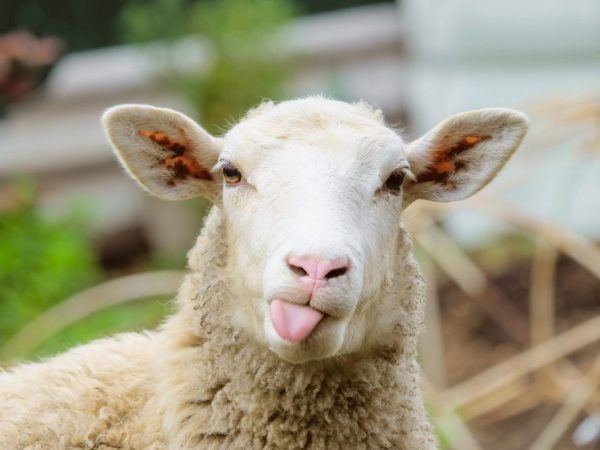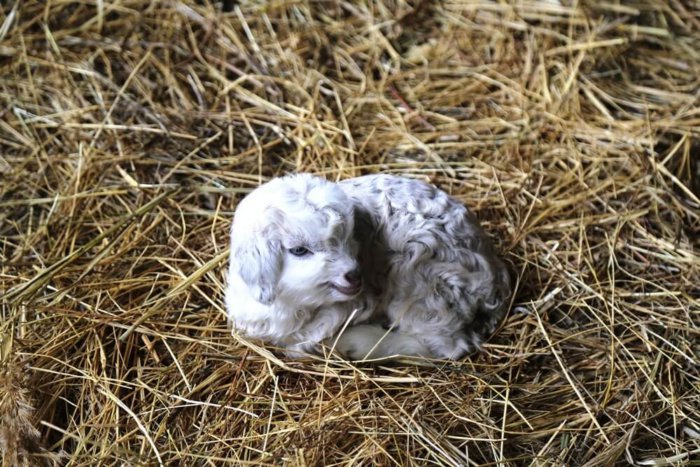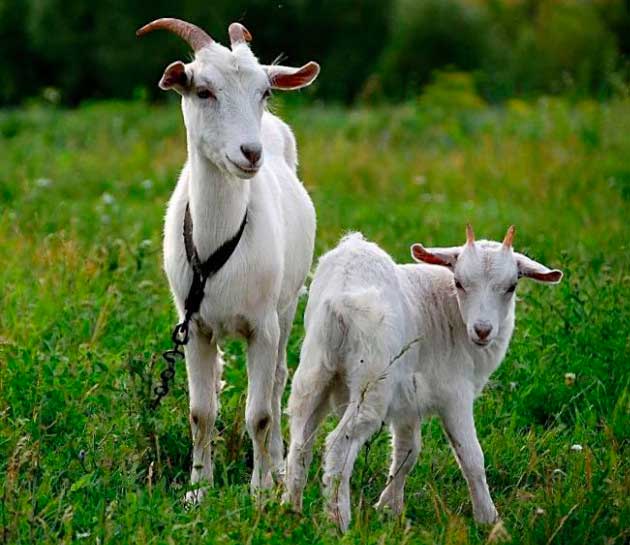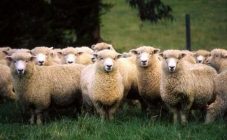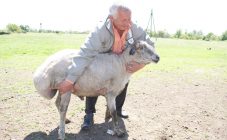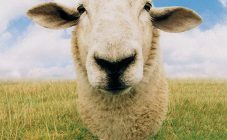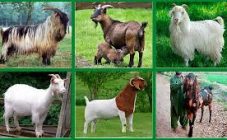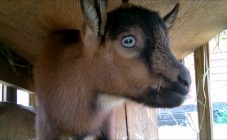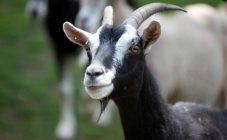Content:
More and more people want to live outside the city in order to eat environmentally friendly, self-grown food, breathe clean air. You can provide yourself with everything you need not only with agriculture, but also with animal husbandry. Sheep breeding has become popular, its advantages:
- animals provide wool, which is in demand at spinning mills;
- sheep are raised for meat, they give milk;
- clothes, interior items, souvenirs are made from animal skins;
- the young are raised for sale to other breeders;
- Sheep are fertile, feed on pasture for a long period of time, are not demanding in care.
Growing can be put at the level of a farm using the labor of a shepherd, milkmaid, shearer, veterinarian. But hired workers need to be paid wages, and a car and a driver are needed daily to supply sheep's milk to a dairy. This all reduces profitability. Therefore, the farmer needs to think about how many sheep to keep and where to place, what breed, how to feed and breed - there are a lot of questions about keeping sheep at home for beginners.
Breed selection
The breeders have bred wool, meat-wool, fur-coat, meat-sucking breeds, the farmer needs to decide on the direction of his activity.
Features of the choice of the breed:
- The fine-woolen breed gives wool with a fiber length of 8 cm. Up to 13 kg of raw wool can be sheared from one sheep, which is easy to process. How much does a fine-wool sheep weigh - 70-80 kg. Merino, Caucasian, Altai, Stavropol breeds belong to wool.
- Meat-wool animals are raised to obtain quality meat and milk. Their wool is shorter and is used to make carpets, blankets, and fabrics. Popular meat and wool breeds are Romney Marsh, Kuibyshev, North Caucasian, Tien Shan with a sheep weighing about 100 kg.
- Sheep of the fur coat variety are bred for fur. From the skins, if they are made, light, durable sheepskin coats are obtained, well-accumulating heat. The Romanov breed, in particular, belongs to the fur coat, which is also bred to obtain good quality meat (the Romanov sheep weighs 70-110 kg, the female - 40-55 kg).
- The meat-feeding animals are the largest, the average weight of the representatives of the well-known Hissar breed ranges within 200 kg. Their wool is not appreciated - it is used in the production of low-grade felt.
Dairy breeds of sheep have also been bred, the Frisian sheep stands out for its milk productivity. Its average daily milk yield reaches 5 kg of milk per day with a fat content of 6%.
Sheep room
A domestic sheep feels good in a flock, and if a beginner decided to start this animal, it is better to buy at least 2 sheep. They can be kept together with other pets, but, counting on the addition of livestock, they build a separate room for the animals.It is equipped with good ventilation, sufficient illumination and heat. In the sheepfold, a pen-room where lambs and sheep live, hygiene is maintained thanks to the drainage system, the organization of drains, and the regular change of litter. To ensure the safety of animals, a fence is installed around the pen.
In summer, sheep graze most of the time in the pasture, traveling long distances under the supervision of a shepherd in search of food. If the size of his allotment allows the farmer, the pasture is fenced off, often with an electronic shepherd, and the flock is left there without the shepherd. This grazing sheep lifestyle reduces the cost of keeping the sheep.
There is also a stall method of raising sheep, it is used in regions with sparse vegetation or when the farmer does not have the opportunity to graze animals on pasture. Due to the ability to control the diet of animals, feeding is justified when growing meat-feeding breeds.
Feed and feeder
The health of animals and the quality of the product for which they are raised depend on feeding. What do sheep eat? When grazing is carried out on pasture, then grass, greenery of plants, young stems of shrubs. To ensure that the animals receive the necessary nutrients, green plant foods are supplemented with table salt and feed chalk. If the sheep are not grazing, they are fed with cut grass. This summer diet has a positive effect on the profit from sheep breeding.
For the cold season, hay is prepared for them. The norm for feeding animals in winter provides for daily 2 kg of hay (1 kg of hay and 2 kg of straw can be used), up to 400 g of concentrates or 2 kg of root crops, 250 g of oat-barley mixture, 10-15 g of sodium chloride, vitamin premixes, feed chalk.
To increase the nutritional value of the plant ration of animals, feeding is supplemented with vegetables, fruits, and grains.
Animals are given clean fresh water to drink not only in summer, but also in winter, relying on moisture absorbed from the snow.
The feeder is installed so that it is convenient for the owners to feed and for the sheep to eat the feed. They are universal, stationary, portable; in shape, the most common nursery-type feeders with an inclined bottom. They can be filled with silage and hay, cut grass, cereals and vegetables can be placed in them.
Reproduction
Sheep and rams are kept separately, letting the male into the corral or releasing it to the pasture if necessary. The pregnancy of a sheep can be judged by the calmer disposition of the animal; after 2 months of pregnancy, the fetus can be felt by hand.
It is important for breeders to know how many lambs a sheep can carry. The answer is the optimal number of offspring per pregnancy is 2-3 lambs weighing 4-6 kg. The number of pups is influenced by the breed of sheep, the diet, and the state of health So, an adult healthy sheep of the Oryol breed gives birth 2 times a year, with each pregnancy 2-5 or more lambs are born.
I wonder how many months a pregnant sheep has been walking. The answer is 140-150 days or 4.5-5 months. All this time, as long as pregnant sheep walk, caring for the female requires careful monitoring of the diet.
A healthy ewe does not need help with lambing. But the breeder needs to prepare the lambing room, cut the wool around the udder so that the newborn lamb has access to the nipples with milk.
The need for a haircut
All sheep are sheared in the spring. There are breeds, the wool of which is additionally sheared in autumn, and which is sheared in spring, summer, autumn. A warm time is chosen for shearing without a threat in the near frost so that sheep without hair do not catch cold.Almost throughout Russia, spring haircuts are done in late May and early June.
The haircut is done with an electromechanical clipper or scissors. It is carried out indoors or outdoors in a prepared area with tables or tarps lying on the floor. There are several methods on how to quickly trim a sheep. It:
- haircut on the table in the usual way;
- obtaining a rune by a high-speed method, in which the shearer often changes the position of the sheep;
- haircut in the New Zealand, or Orenburg, way without tying the animal and with minimal effort to turn the animal over.
With any of the methods, the shearer ensures that the sheep's skin does not suffer, and that the removed fleece is without tears.
The fleece should look good, cleaned of dirt, shaken to remove dust and straighten the villi, folded for storage, bending the sides to the middle, then rolling it with a roller.
Sheep raising problems
Among the problems faced by the sheep breeder, the first priority is to protect animals from predators. It is solved by setting up a reliable fence around the pasture and corral and purchasing an assistant - a shepherd's dog.
Diseases of sheep became the second most important problem. To prevent disease, sanitary treatment is regularly carried out in the sheepfold, preventive measures to protect against diseases and vaccinations are carried out in a timely manner, and they seek help from a veterinarian when they find an ailment.
To find a sick sheep and treat it, you need to know the diseases of the sheep and their symptoms. The short list of possible dangerous diseases includes pneumonia, animals get sick with it, being in a draft, in dampness, with hypothermia. Its symptoms are severe cough, rapid and heavy breathing, high fever. It is necessary to treat the disease with antibiotics, their appointment and dosage are made by the veterinarian.
The most terrible disease for lambs is white muscle. About 60% of newborns die from it, it occurs due to vitamin deficiency. Addition of vitamin E and minerals to the diet of adult sheep becomes a prophylaxis against it.
Bezoar disease is no less terrible for lambs. It is non-infectious and arises from poor, unbalanced diet. Lambs eat their wool, this clogs the stomach, and appetite is lost, pain appears. The bezoar lamb dies.
Smallpox is distinguished among infectious diseases - the whole flock can die from it. Signs of illness include partial hair loss, fever, exhaustion, and loss of appetite. If, when taking antibiotics, the disease continues unchanged, the animal is killed and the corpse is burned. The prevention of smallpox is vaccination.
Goat care for beginners
To obtain wool and milk, goats are also bred. In nice warm weather, the animals are in the pasture all day. Before the start of the walking season in the pasture, the hair around the eyes is shortened. On hot days, goats are driven out for a walk at dawn, they take breaks in grazing from 10-11 hours to 14-16.
In order for hungry goats to eat in moderation, they are grazed on the worst meadows in the morning, and a little hay is given before grazing. If there are young animals in the herd, make sure that young goats do not lie on cool ground.
A single animal is tied to graze.
Goats are given clean water to drink so that they do not drink water from contaminated sources. They are not grazed in the rain.
In the fall, animals are gradually, in 7-10 days, accustomed to hay for stall keeping. At first, hay is given only in the morning, the rest of the food is eaten by the animal in the pasture, then its share in the diet is increased.
In winter, the animals are kept in a barn and taken for a walk daily.Being outdoors is especially important for downy goat breeds.
At all times of the year, cattle are fed with vitamin supplements, formulations with minerals and salt.
Milking and udder care
A goat gives 5-8 liters of milk per day. Preparation for milking begins a month before lambing with gentle massage of the udder so as not to cause pain. The first milking, if the goat feels well, can be done within an hour after giving birth.
Before milking, so that the goat behaves calmly, the animal is given warm water, treated with a delicacy: bread, an apple. During milking, hygiene is observed - the udder is washed with warm water and wiped dry, the milkmaid takes care of personal hygiene and works with clean hands. To make milk easy to express, the udder is lightly massaged before each milking.
Milk the goat, clasping the nipple with your fingers, squeezing and sipping. Everything is decanted, the teats are lubricated with emollient cream after milking.
Keeping sheep and goats is beneficial, they are not demanding in care, and their raising is low-cost. If everything is done correctly, the animals will be fine, their owners will be profitable.
